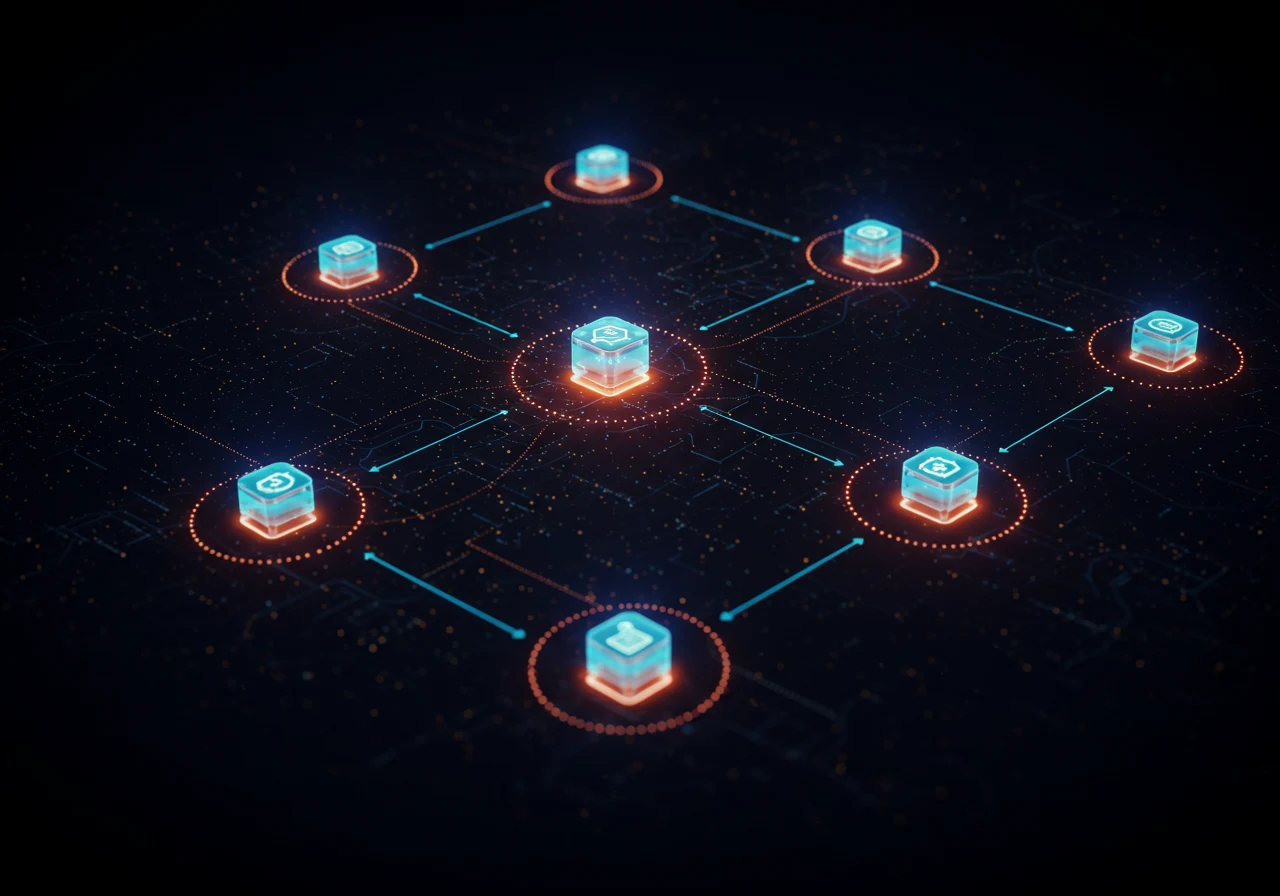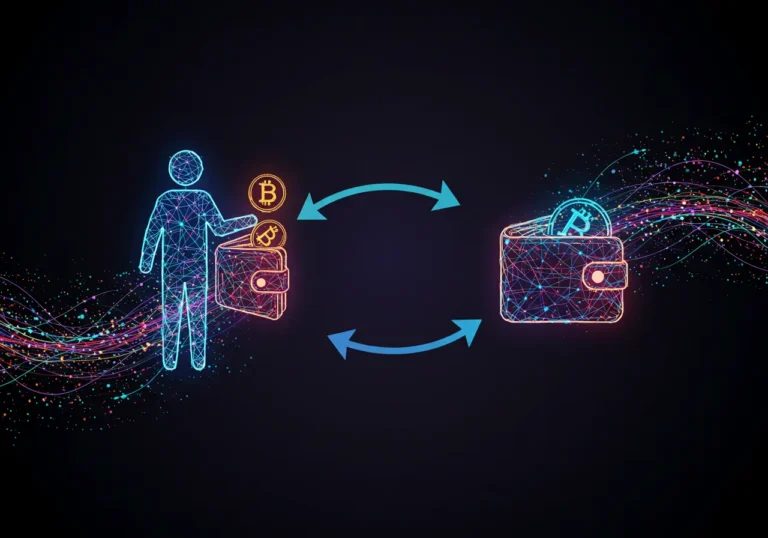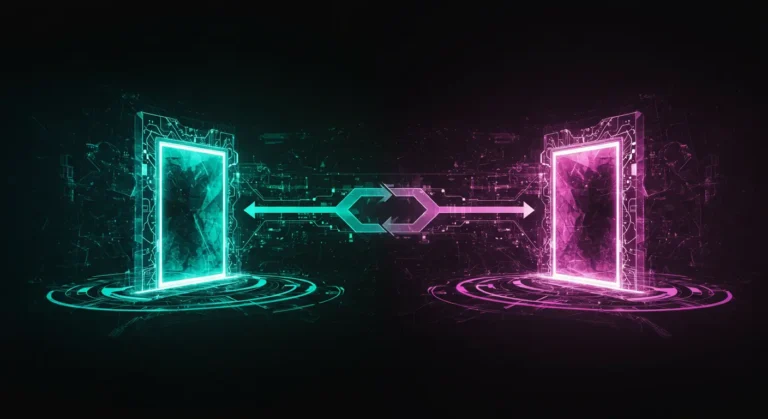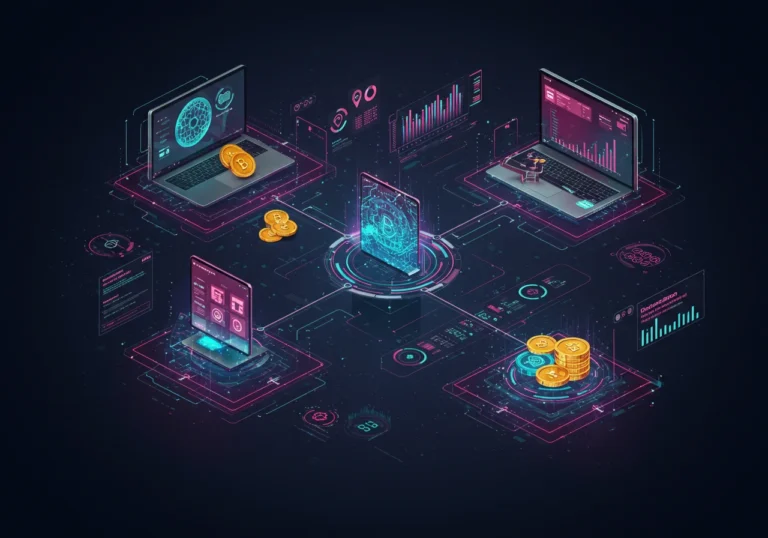What is a Sharding in Blockchain? A Guide to Scalability
Table of Contents
Sharding is one of the most useful tricks blockchains use to grow without getting clogged. In simple terms, it splits the work so many machines can help at once. That helps the network handle more users, more transactions, and more apps — without slowing down to a crawl.
Sharding in Blockchain Explained

Sharding in blockchain means breaking the blockchain’s workload into smaller pieces called shards. Think of a big ledger. Instead of everyone checking the whole ledger every time, each group checks and stores just a piece. Together, those pieces keep the whole system running.
When people hear the word, they worry it’s too technical. It’s not. The point is the same as dividing chores in a kitchen. If one chef tries to do everything, dinner takes longer. If six chefs each handle a dish, the meal finishes faster. That’s the basic idea behind Sharding.
How does sharding work — the simple version
How does sharding work in practice? Imagine we want to validate transactions and keep records.
- The network splits into groups (shards).
- Each shard handles its own transactions and state (its own part of the ledger).
- Special nodes or a coordination layer make sure shards stay honest and can trust each other.
- If a user in shard A wants to interact with someone in shard B, the system passes messages safely between shards.
This setup reduces the load on each node. Each node only processes the transactions for its shard, not the entire network.
Why blockchains need sharding — the scalability problem
Blockchains like Bitcoin or older Ethereum designs require every node to process every transaction. That makes them secure and simple. But it also creates limits: the more people use the network, the slower and more expensive it becomes.
That’s where scalability solutions for blockchain come in. Sharding is one major approach. Others include layer-2 solutions (which move some work off the main chain) and alternative consensus methods (which change how decisions are made). Sharding focuses on changing how work is shared across the base layer.
Benefits of sharding technology
The benefits of sharding technology are practical and clear:
- Higher throughput: The network can process more transactions per second because work is split.
- Lower cost per transaction: With more capacity, fees tend to fall.
- Better resource use: Nodes don’t need huge storage or bandwidth to participate, which helps decentralization.
- Scalable dApps: Apps can run smoother when the underlying network is not a bottleneck.
In short, sharding helps blockchains grow in a steady, affordable way.
Pros and cons of blockchain sharding
No solution is perfect. Here are pros and cons of blockchain sharding.
Pros
- Increases speed and capacity.
- Makes it easier for regular users to run nodes.
- Reduces fees and makes the network more usable for many people.
Cons
- Adds complexity. Splitting work means shards must coordinate, which is hard to get right.
- Security challenges. If one shard is attacked, it might affect the whole system unless safeguards are strong.
- Cross-shard communication can be slower and more complex than single-shard transactions.
The technical teams building sharded systems spend a lot of time dealing with those cons. The goal is to keep the pros while minimizing the risks.
Different types of sharding — data, transactions, and state
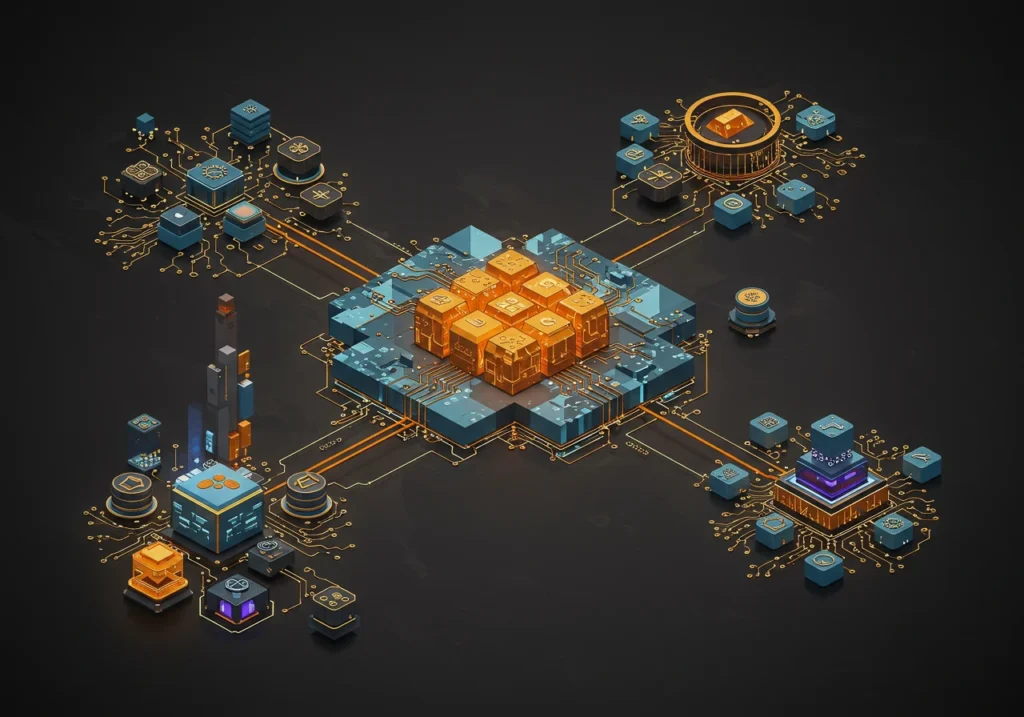
Sharding can mean a few different things. It helps to know the common flavors:
- Data sharding: Splits stored data across shards. Nodes hold less history.
- Transaction sharding: Assigns different transactions to different shards so they can be processed in parallel.
- State sharding: Each shard keeps its own state (balances and smart contract data). This is the most powerful but also the trickiest, because it requires careful cross-shard communication.
Each type solves a part of the scalability puzzle. Projects may combine them for greater efficiency.
Real-world designs and examples
Some blockchain projects already use or plan to use Sharding:
- Ethereum 2.0 (consensus layer + sharding roadmap): Ethereum’s long-term plan includes sharded chains to increase capacity while keeping security.
- Zilliqa: One of the early blockchains to implement transaction sharding and achieve higher throughput.
- Near Protocol and Polkadot: They use variations of sharding or parallel chains to scale the network.
Each project takes a slightly different path. The details matter, but the shared idea is splitting the workload for more speed.
Security and trust: how shards stay honest
A big question is security. If shards are separate, how does the network prevent attacks?
- Random assignment of validators: Nodes are randomly assigned to shards. This makes it harder for attackers to control a shard.
- Cross-shard finality: Systems have ways to confirm that cross-shard messages are valid and final.
- Beacon chains or coordinators: Some designs use a central chain to coordinate shards and guarantee security.
- Slashing and penalties: Misbehaving validators can be penalized, reducing incentives to cheat.
These measures help the network stay trustworthy while using shards.
User experience: what sharding means for you
For most users, Sharding should be invisible. You use wallets and apps the same way. Over time, you should see:
- Faster transaction confirmations.
- Lower fees.
- More apps working smoothly at the same time.
Developers may need to design apps to handle cross-shard operations, but user-facing wallets will aim to hide that complexity.
Sharding vs other scalability approaches
It helps to compare Sharding to other scalability solutions for blockchain:
- Layer-2 (off-chain) solutions: Move many transactions off the main chain, then settle results back on-chain. Examples: rollups, state channels. These are effective but add extra steps.
- Alternative consensus: Change how decisions are made (for example, Proof-of-Stake vs. Proof-of-Work). This can increase speed but does not necessarily raise capacity as much as sharding.
- Sharding: Increases base-layer capacity by splitting work. It can work together with layer-2 solutions for even greater scaling.
The best systems often use multiple approaches together.
Practical challenges developers face
Implementing Sharding is not a quick task. Teams must solve:
- Cross-shard messaging: Sending data from one shard to another without losing integrity.
- State syncing: Making sure nodes can sync quickly without downloading everything.
- Validator assignment: Random and secure selection of shard validators.
- Upgrades and migration: Moving from a non-sharded system to a sharded one while preserving funds and trust.
These are heavy engineering tasks. That’s why sharding tends to roll out slowly and carefully.
Common questions people ask
Will sharding make blockchains less secure?
Not necessarily. Proper designs include randomization, coordination, and penalties to keep shards secure.
Does sharding make developers’ lives harder?
Sometimes. Developers must think about cross-shard calls. But toolkits and libraries help a lot.
Will my wallet change?
Wallets will adapt. For users, the experience should remain simple.
What to watch for as a user or investor
If you follow projects that implement Sharding, watch these signals:
- Are the security mechanisms audited and public?
- Is cross-shard messaging tested in real conditions?
- Does the project show realistic timelines and incremental rollouts?
- Are core teams transparent and do they publish research and test results?
Good projects are careful, open, and incremental. That’s a healthy sign.
Conclusion — simple steps forward
Sharding is a powerful idea for helping blockchains scale. It breaks the workload into manageable shards so the whole network can process more at once. The benefits of sharding technology include higher throughput, lower fees, and broader participation. The trade-offs involve extra complexity and some new security challenges, which good designs can mitigate.
For everyday users, the goal is clear: faster, cheaper, and more reliable blockchain services. Behind the scenes, engineers work out the details. Over time, you will likely benefit without seeing most of the complexity.
Main takeaways
- Sharding splits a blockchain’s workload into smaller parts called shards.
- Sharding in blockchain explained: it lets different groups process different transactions in parallel.
- Benefits of sharding technology: increased capacity, lower fees, and better decentralization.
- How does sharding work: shards process local transactions and communicate securely for cross-shard actions.
- Pros and cons of blockchain sharding: more throughput vs. added complexity and security challenges.
- Sharding complements other scalability solutions for blockchain, like layer-2 rollups and consensus upgrades.
FAQ
Q: Is sharding already used by major blockchains?
A: Some blockchains use sharding or variations of it. Others plan to add it. Ethereum’s roadmap includes sharding elements, and projects like Zilliqa and Near use sharding ideas today.
Q: Will sharding reduce transaction fees?
A: Generally yes, because more capacity means less competition for space and lower fees. But fees depend on demand and many other factors.
Q: Does sharding change how I store my crypto?
A: No. Your wallet and private keys work the same. The network’s internal design changes, but user-facing tools remain similar.
Q: Are there security risks unique to sharding?
A: The main risks are related to shard takeover and cross-shard attacks. Designs include randomization, coordination layers, and penalties to reduce these risks.
Q: Can sharding and layer-2 solutions work together?
A: Yes. Many teams plan to combine sharding with layer-2 rollups for very high throughput.

Hello, I’m Edmilson Dias, founder of CoinBringer. I created this platform to guide people through the fast-moving world of cryptocurrency with clarity and safety. With years of research in blockchain and digital security, my goal is to translate complex topics into practical knowledge, offering reliable tutorials, safety insights, and guidance for both newcomers and experienced users.
Discover more from CoinBringer
Subscribe to get the latest posts sent to your email.

